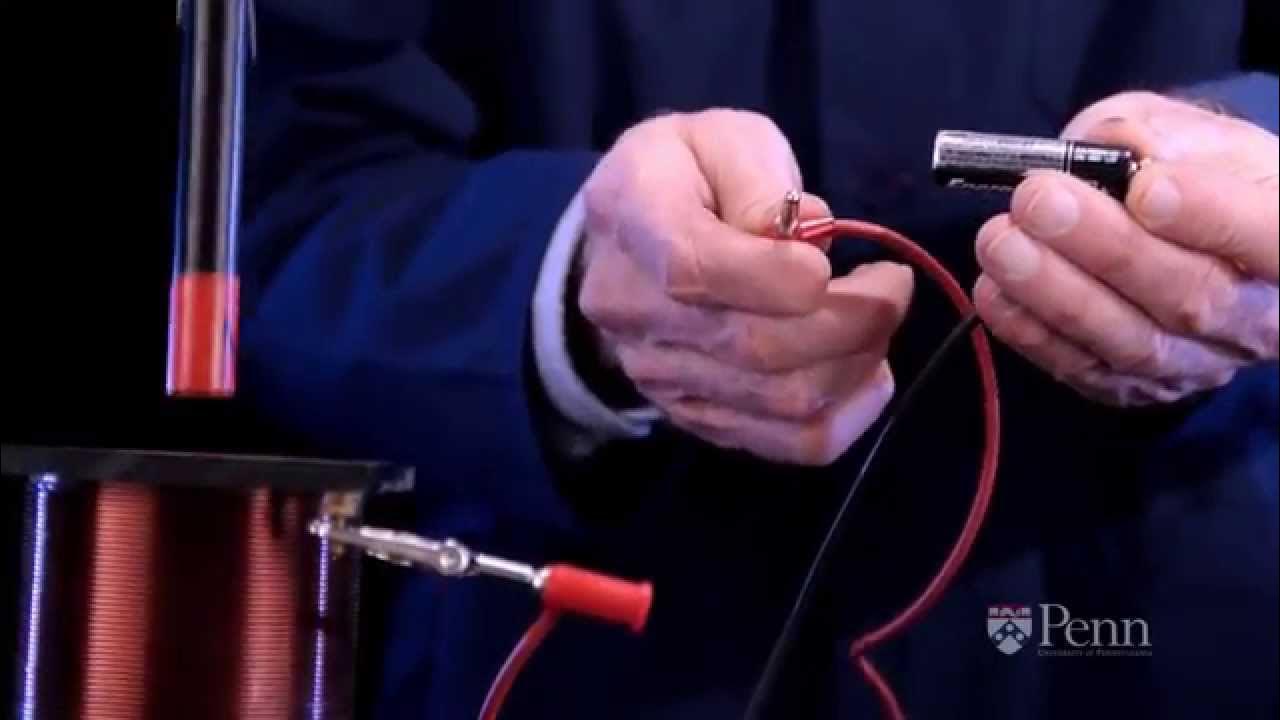CARA KERJA VOICE COIL & MAGNET LOUDSPEAKER #anthonmitraak
Summary
TLDRThis video explains the working principle of voice coils and magnets in speakers. It discusses how electrical current flowing through the voice coil creates movement due to the magnetic field, which in turn generates sound. The speaker's magnet creates a magnetic flux that interacts with the voice coil, causing it to move either forward or backward, depending on the polarity of the current. The movement of the voice coil converts electrical energy into mechanical vibrations, which are then transformed into sound waves. A strong magnetic field is essential for producing clear, loud audio.
Takeaways
- 😀 The voice coil is a crucial component in producing sound in speakers.
- 😀 When electricity flows through the voice coil, it moves due to the magnetic field surrounding it.
- 😀 The movement of the voice coil creates sound through vibration.
- 😀 If the polarity of the voice coil is aligned, it moves forward, producing sound.
- 😀 Reversing the polarity causes the voice coil to move backward, altering the sound.
- 😀 A magnet generates a magnetic field that influences the voice coil's movement.
- 😀 The difference in the positive and negative poles of the magnet creates the magnetic field around the voice coil.
- 😀 A gap in the magnetic field allows the voice coil to move freely.
- 😀 If the magnetic field weakens, the voice coil's movement becomes less responsive, producing weaker sound.
- 😀 The energy transformation from electricity to vibration and then to sound is the core process in speaker function.
- 😀 The strength of the magnetic field directly impacts the quality and volume of the sound produced.
Q & A
What is the primary function of a voice coil in a speaker?
-The primary function of a voice coil in a speaker is to convert electrical energy into mechanical motion. This motion, caused by the interaction with a magnetic field, produces vibrations that generate sound.
How does the voice coil move within the speaker system?
-The voice coil moves when an electric current passes through it, creating a magnetic field around it. This magnetic field interacts with the fixed magnetic field of the surrounding magnet, causing the coil to move back and forth.
What role does the magnet play in the movement of the voice coil?
-The magnet creates a static magnetic field around the voice coil. This field interacts with the magnetic field generated by the coil when an electric current flows through it, causing the voice coil to move.
What happens to the voice coil when the polarity of the electric current is aligned correctly?
-When the polarity of the electric current is aligned (positive to positive and negative to negative), the voice coil moves forward.
What happens if the polarity of the current is reversed?
-If the polarity is reversed (positive to negative and negative to positive), the voice coil moves backward, causing the direction of motion to be inverted.
How does the polarity of the electric current affect the sound produced by the speaker?
-The polarity of the current affects the direction in which the voice coil moves. Correct alignment of the polarity results in forward movement, while reversed polarity causes backward movement. These movements create sound vibrations with different characteristics.
What is the significance of the magnetic field around the voice coil?
-The magnetic field around the voice coil is crucial because it interacts with the field generated by the coil itself. This interaction causes the voice coil to move, converting electrical energy into mechanical vibrations that create sound.
What would happen if the magnetic field around the voice coil becomes weaker?
-If the magnetic field around the voice coil weakens, the movement of the voice coil becomes less responsive, leading to weaker vibrations and a reduction in the volume and clarity of the sound produced.
How does the movement of the voice coil translate into sound?
-As the voice coil moves within the magnetic field, it causes the diaphragm (or cone) of the speaker to vibrate. These vibrations create sound waves that we hear as audio output from the speaker.
What determines the strength of the sound produced by a speaker?
-The strength of the sound produced by a speaker is determined by the efficiency of the voice coil's movement within the magnetic field. A stronger magnetic field leads to more vigorous movement, resulting in louder sound. A weaker field reduces the movement and thus produces quieter sound.
Outlines

This section is available to paid users only. Please upgrade to access this part.
Upgrade NowMindmap

This section is available to paid users only. Please upgrade to access this part.
Upgrade NowKeywords

This section is available to paid users only. Please upgrade to access this part.
Upgrade NowHighlights

This section is available to paid users only. Please upgrade to access this part.
Upgrade NowTranscripts

This section is available to paid users only. Please upgrade to access this part.
Upgrade NowBrowse More Related Video

Cara Kerja Generator Listrik

DC Motors: How Do They Work? Construction & Working Principle of a DC Motor | Electrical4U

Faraday's Law of Induction Demonstration - Penn Physics

Fungsi dan Cara Kerja Trafo

How does an electric motor work?

Cast & Creator of Devil May Cry on Netflix get real with the characters & voices
5.0 / 5 (0 votes)